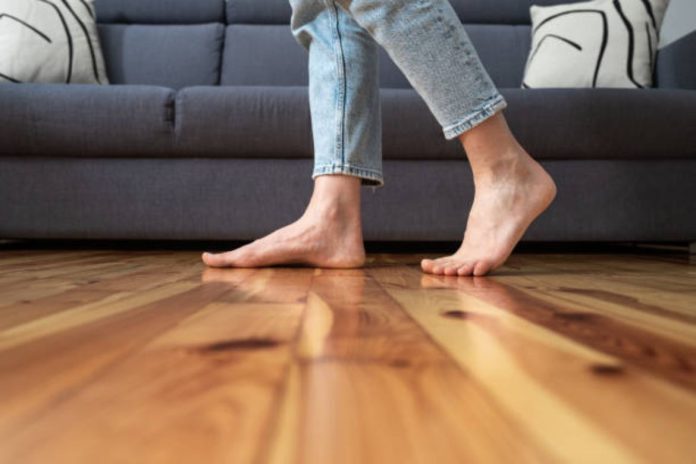In the ever-evolving world of interior design and home improvement, engineered wood flooring has emerged as a superior alternative to traditional hardwood. This innovative flooring option combines the natural charm of solid wood with advanced engineering techniques to create a product that is not only visually appealing but also durable and versatile. This article delves into the intricacies of engineered wood flooring, exploring its construction, benefits, installation methods, and maintenance tips.
Understanding Engineered Wood Flooring
Engineered wood flooring is composed of multiple layers of wood, each serving a specific purpose to enhance the overall performance of the flooring. The top layer, known as the veneer or wear layer, is made of real hardwood, providing the authentic appearance and texture that homeowners desire. Beneath this veneer, several layers of plywood or high-density fibreboard (HDF) are arranged in a cross-grain pattern, ensuring stability and resistance to environmental changes.
Components of Engineered Wood Flooring
Wear Layer: The topmost layer, or veneer, is crafted from genuine hardwood. This layer varies in thickness, typically ranging from 2mm to 6mm, allowing for potential refinishing in the future. Popular hardwood species used for this layer include oak, maple, walnut, and cherry.
Core Layers: The core of engineered wood flooring consists of multiple layers of plywood or HDF. These layers are bonded together in a cross-grain configuration, enhancing the floor’s dimensional stability and reducing the likelihood of expansion and contraction due to temperature and humidity changes.
Backing Layer: The bottom layer provides additional support and stability to the flooring structure. It is usually made from a softer wood, such as pine or spruce, completing the engineered design.
Benefits of Engineered Wood Flooring
Enhanced Stability: The multi-layer construction of engineered wood flooring provides superior stability compared to solid hardwood. This makes it less prone to warping, cupping, and gapping, particularly in environments with fluctuating humidity levels.
Aesthetic Versatility: Engineered wood flooring offers the same aesthetic appeal as solid hardwood, with a wide range of wood species, finishes, and plank sizes available. This versatility allows homeowners to achieve the desired look and feel for any room.
Eco-Friendly Choice: Engineered wood flooring is more sustainable than traditional hardwood flooring, as it requires less hardwood in its production. Additionally, many manufacturers use eco-friendly adhesives and finishes, further minimising the environmental impact.
Ease of Installation: Engineered wood flooring can be installed using various methods, including floating, glue-down, and nail-down techniques. The floating method, in particular, is popular among DIY enthusiasts due to its simplicity and speed.
Installation Methods
Floating Installation: In this method, the engineered wood planks are not affixed to the subfloor. Instead, they interlock with each other, creating a floating surface. This technique is ideal for quick and easy installation, making it a favourite among DIYers.
Glue-Down Installation: This method involves applying adhesive to the subfloor and then pressing the engineered wood planks into place. It offers a more secure and permanent bond, making it suitable for areas with high foot traffic or heavy furniture.
Nail-Down Installation: Similar to traditional hardwood flooring, this method uses nails or staples to attach the planks to a wooden subfloor. It provides a stable and long-lasting installation but requires specialised tools and skills.
Maintenance and Care
Engineered wood flooring is relatively low-maintenance, but proper care can extend its lifespan and maintain its appearance. Here are some essential tips for maintaining engineered wood floors:
Regular Cleaning: Sweep or vacuum the floor regularly to remove dust and debris. Use a damp mop with a wood-friendly cleaner for deeper cleaning, avoiding excessive water which can damage the wood.
Protective Measures: Place felt pads under furniture legs to prevent scratches and use rugs or mats in high-traffic areas. Avoid walking on the floor with high heels or heavy shoes.
Climate Control: Maintain a consistent indoor climate to prevent the wood from expanding or contracting excessively. Use a humidifier during dry seasons and ensure proper ventilation in humid conditions.
Refinishing: Depending on the thickness of the wear layer, engineered wood flooring can be refinished multiple times. This process involves sanding down the surface and applying a new finish, restoring the floor’s original beauty.
Conclusion
Engineered wood flooring is an excellent choice for homeowners seeking the elegance and charm of hardwood combined with enhanced durability and ease of installation. Its multi-layer construction provides superior stability, making it suitable for various environments, including areas with fluctuating humidity levels. With proper care and maintenance, engineered wood flooring can retain its beauty and functionality for many years, offering a valuable and stylish addition to any home. Whether renovating a single room or outfitting an entire house, engineered wood flooring presents a practical and aesthetically pleasing solution for modern living spaces.









